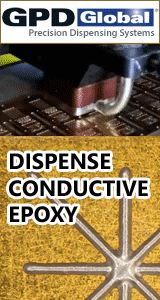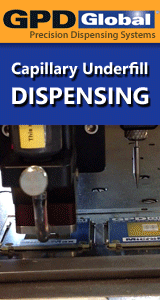NO-LEAD COMPONENTS WITH LEAD SOLDER ISSUE: We agree with Russ. We've dicussed this several times on SMTnet. For instance, look here http://www.smtnet.com/forums/Index.cfm?CFApp=1&Message_ID=25394
LEAD COMPONENTS WITH NO-LEAD SOLDER ISSUE: We disagree with Russ. As with many things, there appears to be two distinct industry camps on the topic of lead contamination of no-lead solder joints. * One camp is of the opinion that the presence of lead is detrimental to no-lead solder joints and significantly reduces the thermal cycle fatigue life. * The opposing camp is of the opinion that the presence of lead does not impact or only slightly degrades a no-lead solder joint thermal cycle fatigue life.
Many solder suppliers recommend against using lead components with no-lead solder, because of weaker solder connections [discussed in the next paragraph].
Unfortunately, in the past the presence of lead in lead-free alloys has been presumed to be acceptable. The logic behind this was that tin and lead are soluble in a lead-free system. However, what has been overlooked is that the intermetallic crystalline structures in lead-free systems are not soluble and will precipitate at lead boundaries. Thus, when using a lead-free alloy to solder to Sn/Pb coated component leads, Pb can actually create voids in the solder joint that can result in joint failure. [from an AIM Solder presentation]
Dynamics of Lead Contaminated Solder Joint Failure [from an AIM Solder presentation] * It is important to note that lead that contaminates a lead-free solder joint is not distributed uniformly through the joint; rather, the Pb localizes in the last point to cool. * This is similar in dynamics to �zone refining�, a process utilized to refine high-purity elements. In zone refining, a heat source traverses across a billet. As this occurs, the elemental impurities are collected in the liquid phase and are condensed at the last point to cool (the end of the billet), which is then removed. * Just as in zone refining, lead as an impurity in a solder joint migrates to the last area of the joint to cool. This occurs under the middle of the component lead at the solder joint-PCB interface. * When this occurs, the joint forms pockets and the grain structure is disturbed. These Pb-rich regions are lower in melting temperature and may cause dewetting during soldering. * This is inevitably the area of a solder joint that results in a failure.
Let's not kid ourselves, we're going to be building [and dealing with field failures and having freaked-up general managers] with lead contaminated no-lead solder connections for years. [And that's why the solder suppliers are recommending not using leaded parts with no-lead solder. So that when the failures start piling-up, they can say, "See we told them not to mix materials, like that, but did they listen? Nooo!!! Our hands are clean."]
reply »
![]() Hi
Any body have any issues soldering tin lead solder pa...
- Aug 31, 2004
by
Hi
Any body have any issues soldering tin lead solder pa...
- Aug 31, 2004
by
![]()
![]() Kris, this practice has gone on for years. I have never hea...
- Aug 31, 2004
by
RDR
Kris, this practice has gone on for years. I have never hea...
- Aug 31, 2004
by
RDR
![]()
![]()
![]() NO-LEAD COMPONENTS WITH LEAD SOLDER ISSUE: We agree with Rus...
- Aug 31, 2004
by
davef
NO-LEAD COMPONENTS WITH LEAD SOLDER ISSUE: We agree with Rus...
- Aug 31, 2004
by
davef
![]()
![]()
![]() Now see Dave, now I have some good info on why it is "bad", ...
- Aug 31, 2004
by
RDR
Now see Dave, now I have some good info on why it is "bad", ...
- Aug 31, 2004
by
RDR
![]()
![]()
![]() See Russ, that's why we're all here. => To take our turn at ...
- Aug 31, 2004
by
davef
See Russ, that's why we're all here. => To take our turn at ...
- Aug 31, 2004
by
davef
![]()
![]()
![]() I have experienced this directly in SMT and wave solder.
...
- Aug 31, 2004
by
I have experienced this directly in SMT and wave solder.
...
- Aug 31, 2004
by






.gif)